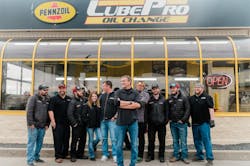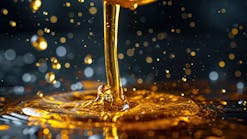There is an approach to the process of a quick lube that will lead to desired results, like reliability and safety. Checking your work might not save time, but it could save lives.
While some processes during a quick lube may be more important than others, all of them are degrees of importance that require constant attention and double checking. Jerod Starch, who manages Lube Pro Oil Change and Inspection Xpress in Lubbock, Texas, believes double checking the processes in any oil change is the most important step.
“Obviously any safety concern is just that,” Starch says. “We want to make sure that we’re bringing up anything that could be an issue for a person driving on the road.”
Step one: Check it Twice
Going through the checklist of any oil change, there are many important things to do and check when being thorough under the hood. Starch believes that constant communication is key in this area.
“Making sure that communication is constant, not only for ourselves but for the customer,” Starch says. “Completing everything, checking and rechecking and even verbally saying the stuff that we’re checking out loud, again, not only for ourselves but for the customers.”
What does it mean to check and recheck? Starch says it’s about keeping each check thorough and reliable. Checking to see whether you saw something right or whether you adjusted something correctly. This starts with verbal communication and collaboration between team members and customers.
A very important thing in the interest of safety is making sure caps are tight. Double checking those can be key, because without them a fire could start. Transmission and oil dipsticks need to be down and in place without a shadow of a doubt and air filter baskets should be completely put back together with no leaks.
It’s standard stuff, but Starch says they’re all very important when it comes to double checking. Without that thorough mindset, safety concerns could open up for customers.
“If we have a vehicle that we have not seen before and even if it’s a returning customer, there’s never anything [under the hood] that is more important than [something else],” Starch says. “[...] If we have not touched anything under the hood before, every single thing is just as important as the other because we may be catching something that was left behind on a previous visit that we don’t want to have issues over.”
Step two: Safety First
With the caps, dipsticks and air filters being some of the more potentially dangerous mistakes a lack of double checking can bring on, safety of the customer needs to be a priority.
Starch says everything needs to be checked multiple times, out loud, but not just for their own understanding, but for the understanding of the customer.
“If you were to not have a cap that was on correctly or left off entirely, that oil can get all over the engine and start a fire,” Starch says. “[...] It’s essentially just making sure that all of the mechanical systems underneath are checked correctly, have the right amount of fluid in them and of course keeping those systems closed from contamination or any spillage issues or any hazards.”
There’s no big secret to checking everything multiple times, but Starch says his group will say each thing out loud to make sure they’re keeping up on it and to inform the customer of what they're checking.
Step 3: Conclude
Customers will want to get in and out quickly when getting their cars looked at. However, checking things twice could be the difference between life and death for some people and some vehicles.
Starch says it’s important to remember that being thorough and leaving no stone unturned in the rechecking process is the best way to value your customers and treat their vehicles in the correct manner.
The safe practice can be a benefit to the customer and the people running the oil change as well. A safe and thorough check is ultimately what the customer wants.
“Be prepared to make sure that your customers are always first,” Starch says. “They’re the ones that make you successful, so having those kinds of ideas and that kind of structure is very important.”





